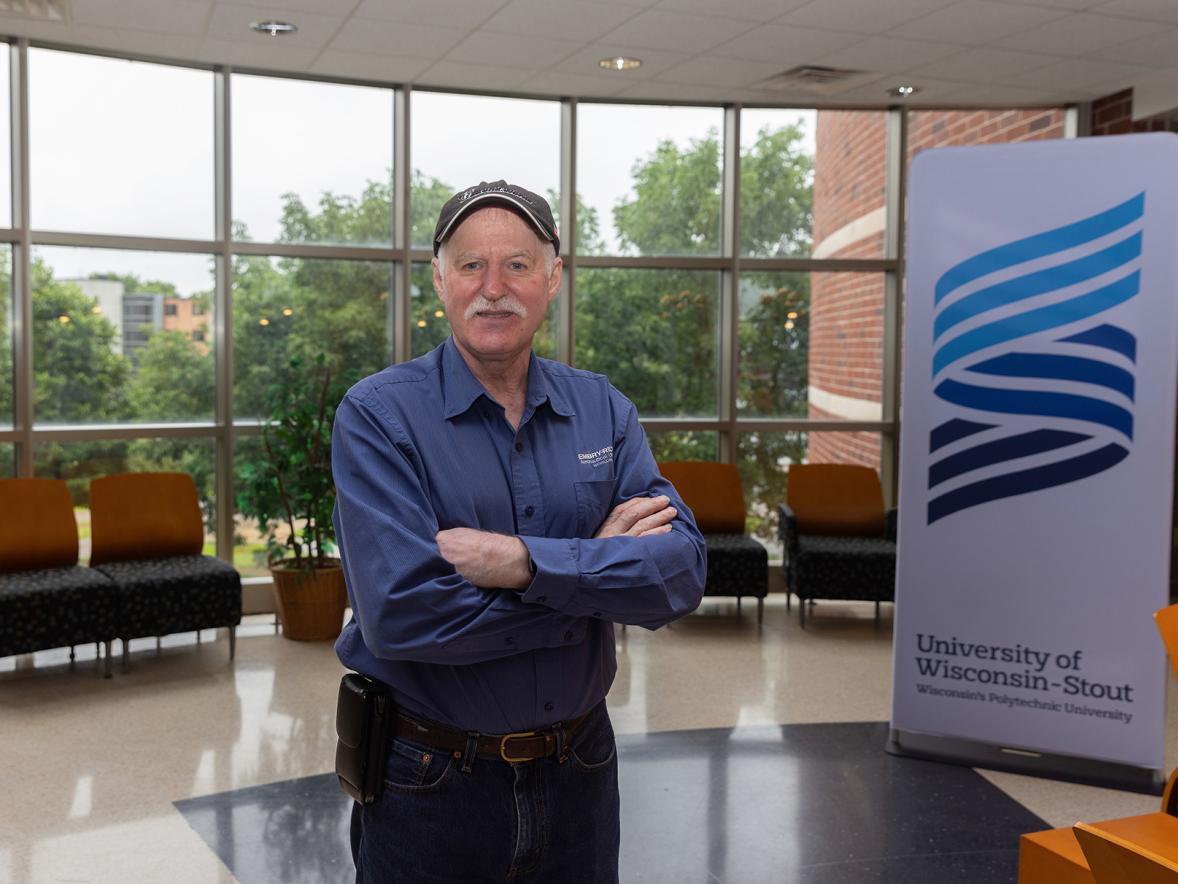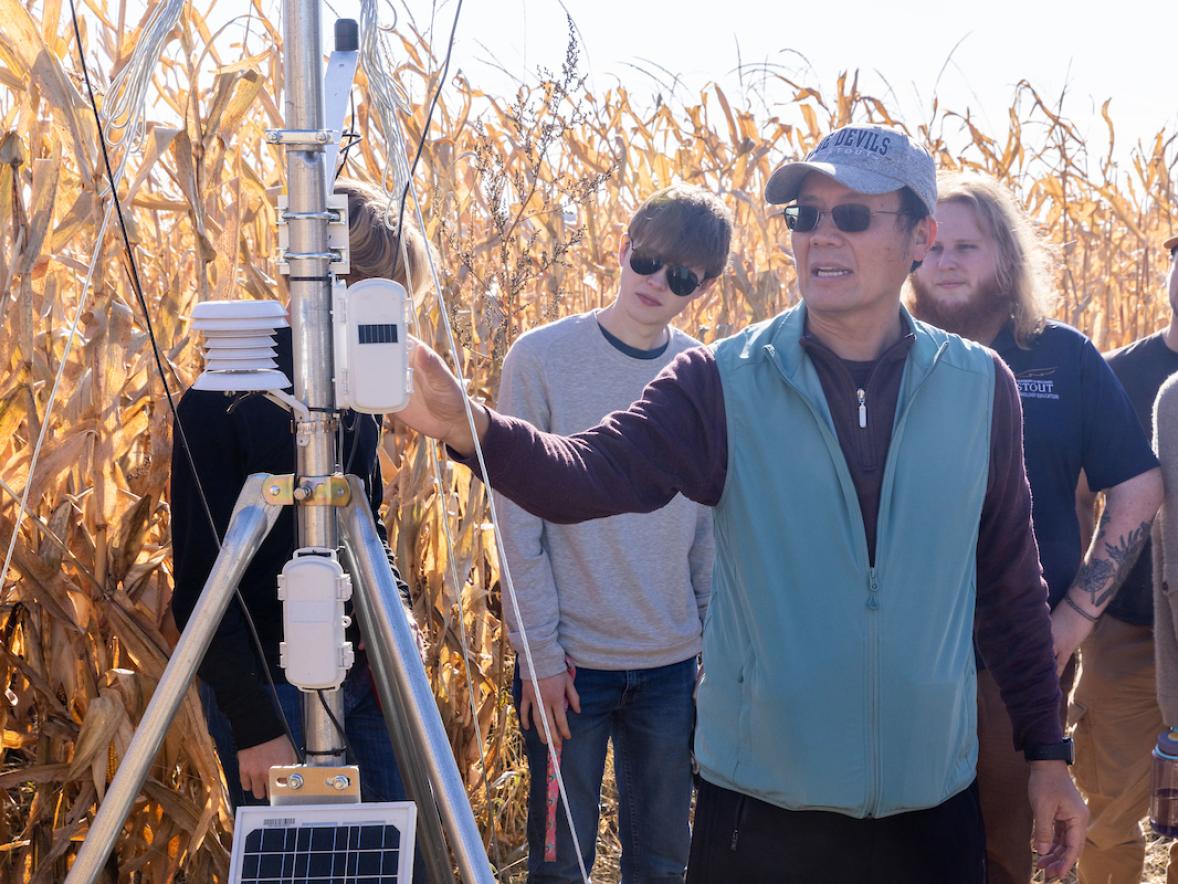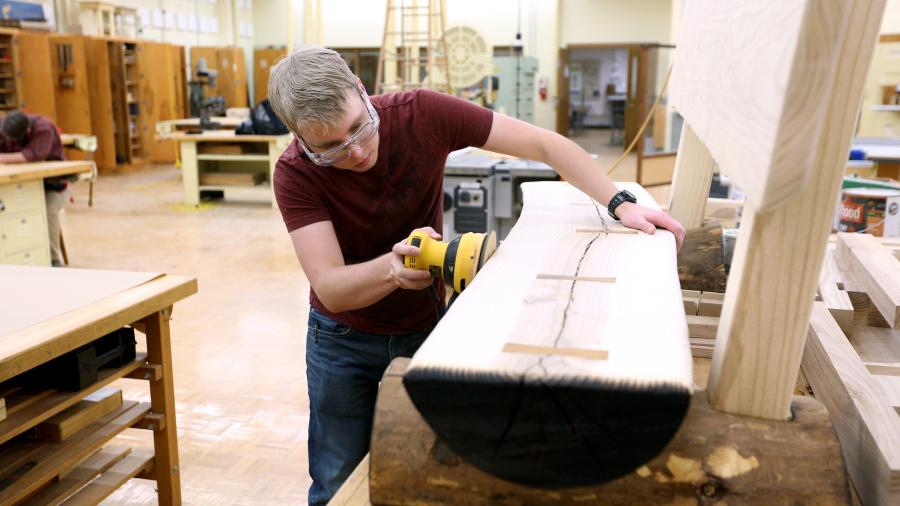
Visitors at the Brickyard and Wakanda Park disc golf courses in Menomonie may notice a new amenity when they play the courses in 2018: Rustic benches.
Seven benches have been designed and built by University of Wisconsin-Stout students, and six of them will be installed at the courses in the new year, with more on the way, thanks to a collaboration with the city’s Urban Forestry Board through a Wisconsin DNR grant. One bench will go to the city’s Leisure Center.
The beauty of the project goes beyond the university-city-DNR collaboration. The benches themselves are unique, eye-catching designs made with wood from 30 city ash trees.
“The trees have been repurposed for a good cause,” said Landon Julson, of Eau Claire, one of the project leaders who graduated Dec. 16 with a degree in engineering technology.
The city has been cutting ash trees with the expected arrival of the tree-killing emerald ash borer. When the forestry board received a $9,000 Department of Natural Resources Urban Forestry Grant early in 2017, it saw an opportunity to reuse the wood via the partnership with UW-Stout.
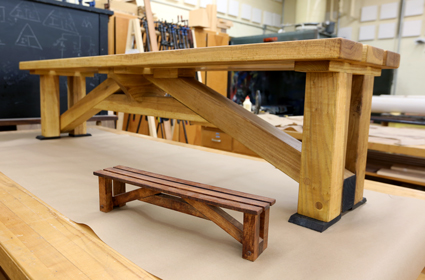 Thus began a research and development project, one that will continue in 2018 under the direction of Professor Jerome Johnson. The first building phase of the project was capped off in December when students presented the finished benches to members of the board in the Research and Development Prototyping Lab at Jarvis Hall Tech Wing.
Thus began a research and development project, one that will continue in 2018 under the direction of Professor Jerome Johnson. The first building phase of the project was capped off in December when students presented the finished benches to members of the board in the Research and Development Prototyping Lab at Jarvis Hall Tech Wing.
The seven benches were built in the fall, with another five to seven expected to be built during the spring semester. Last spring, students in a sophomore-level Research and Development class developed ideas for the benches and created scale models. Some of these were then built by the seniors.
The benches vary in color, shape, size and style:
- They have light, medium and dark natural stains; one has a band of pink.
- One has four square modules, each a different color.
- Several of them have curved sitting areas to encourage conversation.
- Several are atypically long, able to hold four to six people who could be playing a round of disc golf together.
- Several feature natural slabs of wood for the backs and seats.
- One has legs with feet shaped like real feet, including toes.
“They’ve even got enough space to take a nap,” quipped one student.
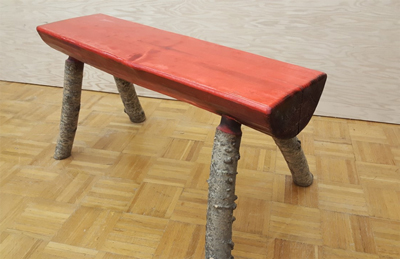 Randy Eide, Menomonie Public Works director who advises the forestry board, attended the presentations and told those in attendance that the project is “a great collaboration with the university and students, and the grant is giving something back to the community. These benches will be used for a long time.”
Randy Eide, Menomonie Public Works director who advises the forestry board, attended the presentations and told those in attendance that the project is “a great collaboration with the university and students, and the grant is giving something back to the community. These benches will be used for a long time.”
Eide and forestry board Chairman Joe Jax thanked the students for their work.
The project was coordinated through forestry board member Nancy Schofield, a professor emeritus in engineering and technology at UW-Stout. “The students are doing something they like. It’s a win-win-win situation,” said Schofield, who also audited one of the classes and observed students working on their projects.
In addition to the classes, students from the American Society of Mechanical Engineers, Society of Women Engineers and other student organizations volunteered many Friday afternoons sanding and finishing the benches.
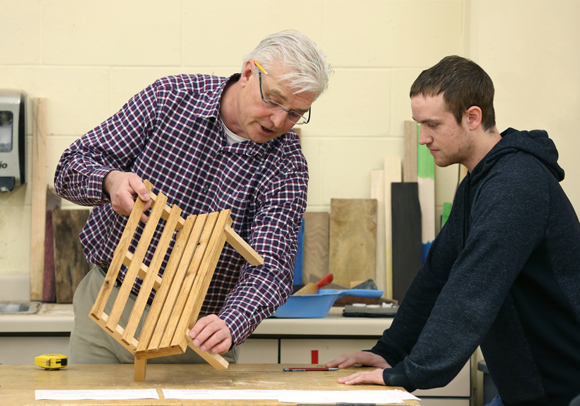
‘Skills learned and knowledge gained’
Students used a variety of building techniques and processes. When it came time for staining and sealing, they had to consider that the benches will be exposed to the elements year-round. As technology education senior Andrew Merryfield, of Little Chute, pointed out, they experimented with an ancient Japanese method of finishing called Shou Sugi Ban, in which the end grain is charred and oil is added, resulting in a hard material more resistant to fungi.
“There was a lot we had to think about before completion, but it makes you feel good knowing the relationship of this project with the local community,” said Julson, the engineering technology graduate who wrote the final report for the fall class.
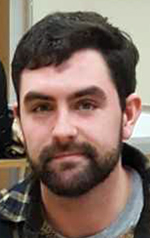 “From day one to the last weeks of the semester, there were skills learned and knowledge gained that the team did not imagine. Most of these skills and lessons are ones that can be used in the professional field after the course is over, and that makes the course very valuable for the students,” Julson added.
“From day one to the last weeks of the semester, there were skills learned and knowledge gained that the team did not imagine. Most of these skills and lessons are ones that can be used in the professional field after the course is over, and that makes the course very valuable for the students,” Julson added.
Julson, whose concentration was in mechanical design, was scheduled to begin work full time soon after graduation as an HVAC engineer at Apex Engineering in Eau Claire.
Johnson said his students “seemed to be motivated by doing this project with the purpose of providing a service to the community,” adding that ash isn’t the best type of wood for outdoor use, requiring students to troubleshoot various finishing issues.
Other members of Johnson’s Research and Development classes experimented with bentwood processes and developed other wood products, which they explained to the forestry board. The projects included a fidget spinner, hunting bow, firearms cabinet, hydrofoil for a wakeboard, stave-and-hoop barrel, mandolin and guitar-style dulcimer.
Brickyard disc golf course
Schofield noted that the Brickyard disc golf course, where some of the benches will be placed, was designed by a UW-Stout golf enterprise management student and built on city land, on the southwest side. The UW-Stout disc golf club, with community support, funded the project.
###
Photos
Top: Max Mueller, majoring in engineering technology, works on a bench.
Second: Students first created models, foreground, of bench designs for the disc golf courses in spring 2017 before making seven benches in fall 2017.
Third: The finished benches are a variety of designs and sizes, such as this one with a stained seat and natural log legs.
Fourth: Professor Jerome Johnson, left, discusses a bench model with a student.
Bottom: Landon Julson





